Blog
FREYA: THE NORSE GODDESS
 11Jun
11Jun
Freya is one of the most recognizable central figures in Norse mythology. She is a goddess of love, fertility, beauty, and war. Many generations of Vikings were delighted by her femininity, mercy, and blessing – Freya goddess worship was a common phenomenon. She was considered a heartthrob, although she had no intention to seduce the gods, dwarfs, or earthly men – all of them were fascinated by her unearthly beauty. So, who was exactly this goddess, what is Freya the goddess of, and which family ties she had? Let’s find out – here is fully described Viking goddess Freya information.
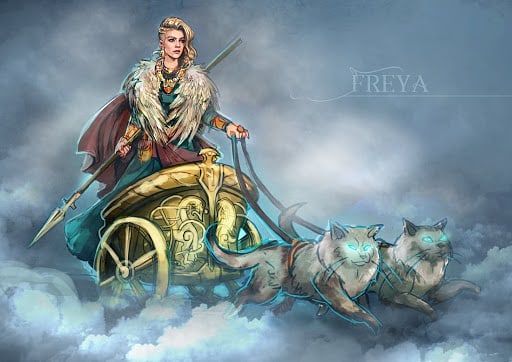
Who is Freya in Norse mythology?
Freya appeared in Nordic mythology as a goddess of love, beauty, warfare, death, magic, and witchcraft. A goddess symbolizes Love and War, fruitfulness, maternity, and poetry. Freya is a goddess of the full moon too. There is a common belief that she originates from the Vanir – a group of gods, which had a powerful connection with the Earth and practiced magic. She was born with a knowledge of witchcraft and the Runes – that’s why many women, who worshiped the goddess, were named «witches» and condemned by Christianity. Despite the struggle of Christians against paganism, worship of Freya was widespread in Scandinavia, Greenland, Iceland, Holland, the Germanic lands, and Anglo-Saxon Britain.
Although Freya is a goddess who is often associated with love, fertility, sex, and gold, her name is also determined by war and death. But, why is Freya a goddess of war? It is caused by the fact that she often supervised battles and deaths during the wars. In addition, one day Freya shared half of the warriors with god Odin. From this time he started to call Freya a goddess of war. Besides, Freya was a ruler over a huge meadow Folkvangr, which means people’s field.
It is considered that Viking goddess Freya has the power to control other’s fortune and was able to influence desires. Other Freya’s features include overseeing the battles, presenting fertility, and fulfilling the pleas of love. Besides, there is a common belief that she was the first who has brought the art of Seidr to the gods – this type of magic was widely used during the Late Scandinavian Iron Age.
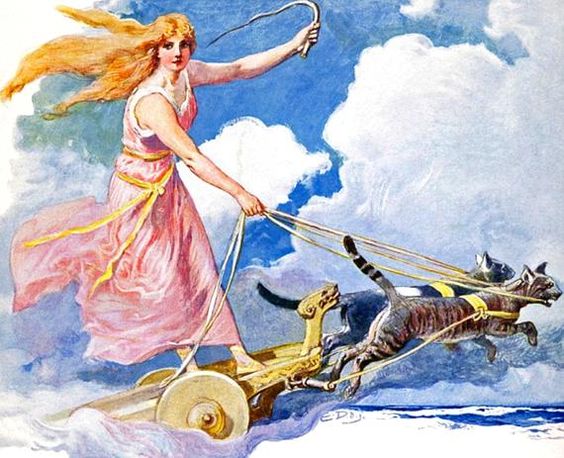
What does Freya mean?
The name Freya is translated from the Old Norse as «a lady». Most likely it was borrowed from the word frawjon – it was an honorific title for a mature woman with a high social status used in the Old German language. There are assumptions that the modern German word «frau» (an honorary title for married women) originates from the name of the Nordic goddess Freya.
This name has first appeared as a nickname or an attribute of certain Germanic tribes, which have lived in that age in a territory of the Scandinavian peninsula. This fact makes us understand, what does the name Freya means and why it originates from German.
Another Freya’s name is Horn that is translated from Old Norse as «horr» and means linen or flax. As it is known, linen began to cultivate in the Norse during the Viking Age. The Scandinavian believed that linen could protect them from any evil and brought fertility to the land. Moreover, bridal dresses were made of linen in this era, so Freya became a patroness of weeding and love as well.
Freya also has a third uncommon name – Gefn. It is translated from the Old Norse as «giver» – someone, who gives prosperity and peace. There is a theory, that Freya’s name Gefn origins from the name of the Germanic goddess associated with the sea – Gabia. Probably, Gefn was determined as a goddess of plenty, as Freya exactly was.
Sometimes there was used name Syr for the definition of the Norse goddess. Literally, it means a sow. A pig was a sacred animal for a family of gods Vanir, where Freya and her brother were originated. A swine was important in their sacrificial rites as well. Nonetheless, it can be assumed that Freya’s connection with pigs refers to her hog Hildisvini – it was a faithful companion of the goddess. Freya has ridden a hog while she didn`t want to ride a chariot pulled by her cats.
The name Vanadis was also used for the Nordic goddess Freya. It means «van-child». Literally, Vanadis goes for a child of Vanir, which is proof of the strong Freya’s connection with the group of gods called Vanir.
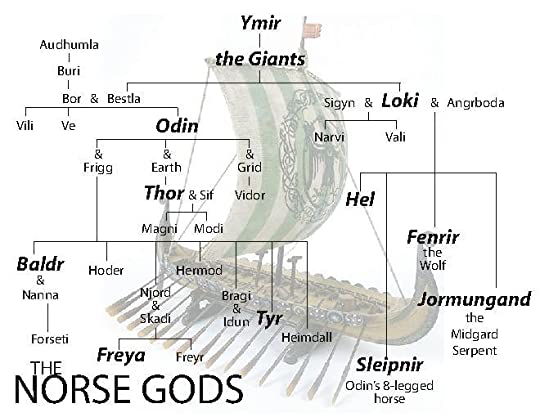
Freya goddess family tree
To tell the truth, there are some inaccuracies in the family tree of Freya due to the different interpretations of mythology. Still, we can just refer to some mythic sources as the Poetic Edda. We know for sure that Freya was a part of the Vanir family of gods. Let’s disassemble with the family ties of this Nordic goddess.
Freya’s Mother and Father
Freya was a daughter of Njord – a god of Vanir. He was often associated with the sea, wind, fishing, sailing, and wealth. It is considered that Njord lived near the sea in a great hall Noatun.
There isn’t a final answer when asked who is the mother of the goddess Freya. Maybe, she was Njord’s sister. Another source considered that her mother appeared as a wife of Njord called Skadi. But it is most likely that a mother of Freya was Nerthus – an old Germanic deity. Nerthus was a goddess of plenty and peace.
Freya’s Brother
Freyr was the brother of Freya and possibly her twin. He was a god of prosperity, fortune, peace, pleasure, and male virility. Freyr also originated from Vanir and lived in the realm of Alfheim. According to the pictures of the Nordic deities, Freyr had a phallus that was common among fertility gods.
Freyr was also famous for his passion for horses – he was always associated with a cult of these domestic animals. It is considered that a god kept his sacred horses in a sanctuary at Trondheim in Norway.
Freya’s Husband
The popular question is who was the goddess Freya married to? It is a common belief that Odr was Freya’s husband. He was distinguished from other gods by his mysterious, furious, and passionate spirit. Odr has often spent a lot of time on long journeys and made Freya cried with golden tears.
Still, there are some contradictions regarding the personalities of Freya and Odr. There is a possibility that Freya was actually Frigg – a wife of Odin. This way, probably, Odr was in fact Odin? Or Odr is a short form of a name Odin? Such inaccuracies appeared because of different interpretations of Norse mythology among the Germanic groups.
Freya’s Daughters
After a marriage, Freya had two daughters – Hnoss and Gersemi. It is mentioned in the Prose Edda by Snorri Sturluson. The meaning of both names is «treasure» or «preciousness» and it’s usually associated with something valuable.
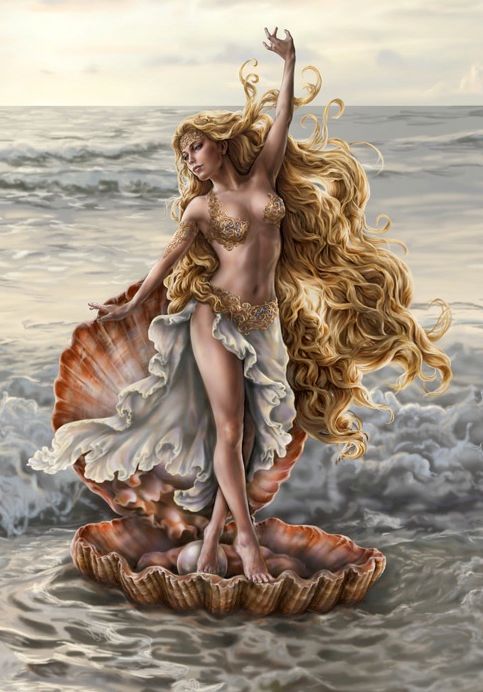
Which Greek goddess is most like Freya?
Freya is most often compared with the Greek goddess Aphrodite due to their similar patronage – love, beauty, and fertility. They are typically central figures in both mythologies.
The Norse mythology represents relationships between Freya and the wife of head god Odin Frigg the same as the relationships between Greek goddesses Aphrodite and the wife of the head god Zeus Hera.
Both goddesses, like Aphrodite and Hera, are the most beautiful and recognizable deities and at the same time differ by their sexual fornication. Another difference from Greek mythology is that Aphrodite and Hera use their power for some sort of cruel purposes, unlike Freya and Frigg direct their magical powers for more shallow means.
A difference between Greek and Norse mythology is that features of Aphrodite and Hera are clearly separated, unlike Freya and Frigg have often the same powers and patronage of love, sexuality, and fertility. There is an assumption that Freya and Frigg are actually the same goddesses – they even have the same husband called Odr or Odin.
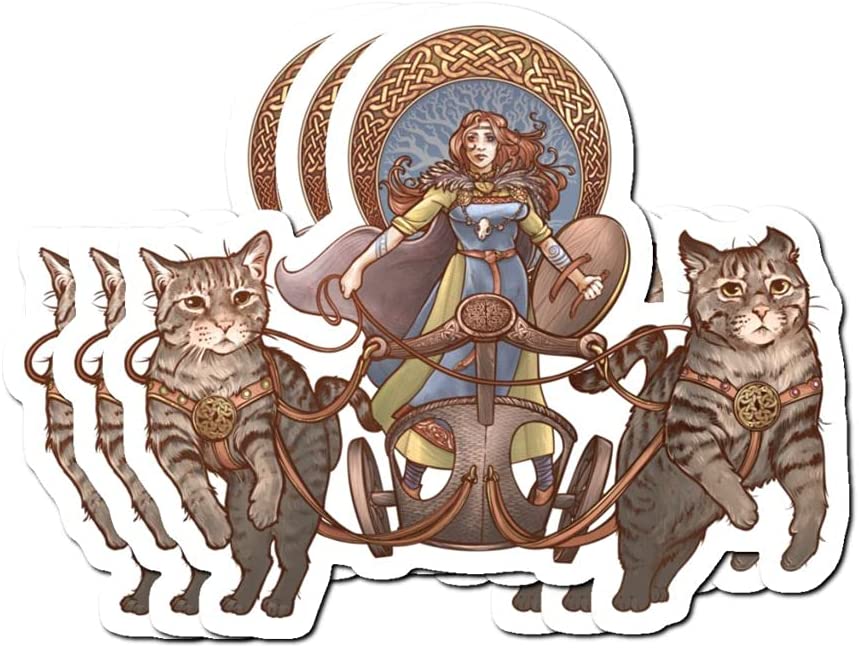
What are Freya’s symbols?
The most famous Freya Norse goddess symbol is the Brisingamen Necklace – it was maybe the most valuable Freya’s possession. She carefully protected it from any thieves with a strong ardor. According to the legend, one day Freya wandered in the land of the Dwarfs and saw four of them were making the golden necklace of extraordinary beauty. She was ready to pay the Dwarfs any amount of gold for this necklace. But, the Dwarfs were tricky and then told her they didn’t have any need for money. Instead, they offered the goddess to sleep with each of them, and Freya agreed since she really wanted to get a golden necklace.
Another Freya symbol is her golden glittering chariot pulled by two blue (or grey) cats – it is known as a gift from Thor. Freya goddess cat’s names were Bygul and Trjegul. Cats were often associated with fertility and femininity since time immemorial of Ancient Egypt – that’s why Freya preferred cats pulled in the chariot instead of the horses. Moreover, these cats were male, which probably symbolized a connection between male and female sexuality.
Furthermore, she was usually in company with a swine named Hildisvini, which is means a battle pig. She sometimes could ride a pig when she didn`t choose a chariot. Her other epithet Syr that means «sow» probably originated from contact with Hildisvini.
A cloak made of falcon feathers was another symbol and attribute of the Norse goddess Freya. This cloak was magic and endowed the ability to fly everyone who took it. This way, many gods were willing to borrow a cloak from a goddess. Freya herself wearing a magic cloak was enabled to fly in a falcon shape too.
How to give thanks to the goddess Freya?
Many believers refer to the goddess Freya with prayers of love, marriage, and childbirth. This Norse goddess is a patroness of a women’s fortune and sexuality as well as she is a keeper of runes.
Here is a short description of a ritual to honor Freya. You need to remember that Freya’s sacred colors are red and silver, sacred flowers – daisies and primroses and sacred fruit is strawberry. Be sure you have all the attributes before the ritual.
«I call upon the powers of the East, powers of air to help me clear my mind. I call upon the powers of the South, powers of fire, inspiring me of my inner strength. I call upon the powers of the West, powers of water which reunite me with the Mother’s blood. I call upon the powers of the North, powers of the Earth to keep my body strong and my mind concentrate».
«Freya, goddess of magic, mother of the Earth, keeper of the runes, I invite you to join me. Freya, the goddess of the many names, goddess of nature and fertility, mother of the silver moon, hear me. Freya, goddess of love, join me. Freya, your guidance and prudence I seek. Come to me now».
9. Be grateful for the presence by expressing words of gratitude.
10. Slowly come to your senses.
11. Take the offering and put it outside for consumption by nature.
12. You can use all of the attributes for the next ritual in the honor of a Norse goddess Freya.
Friday is considered to be the best day in the week to invoke Freya since the word Friday is translated as Freya’s day. In addition, Freya’s sacred number is 13 – there are 13 lunar cycles in a year. According to this, the best day to make a ritual dedicated to the Freya goddess is Friday the 13th.
What food is associated with the goddess Freya?
Freya is often associated with such plants as almond, mint, valerian, bird berry, arnica, holly, strawberry, daisy, opium poppy, and so on. When we talk about food, it first goes to ale, apples, strawberries, honey, meadow, barley, and pork. These products are Freya’s favorite. Use this food to satisfy the Nordic goddess while a ritual is dedicated for her.
What religion does the goddess Freya belong to Freya, as well as The Vanir, belongs to the Norse Paganism or Old Norse Religion. This ramus of Germanic religion is characteristic of a Proto-Norse period when the North Germanic nation separated into a branch of the Germanic people. Later, Old Norse Religion was replaced by Christianity during the Christianization of the Norse. It is worth mention that many researchers consider Norse mythology as an important component of the North Germanic religion in general.
The Old Norse Religion includes a belief in different gods, goddesses, and deities. This world was inhabited with other mythological creatures, like dwarfs, elves, giants, and numerous spirits. All the Norse deities were divided into two families – the Vanir and the Esir. According to the legends, gods from the opposite groups have always been enemies until the Esir and the Vanir figured out that they are equally potent.
The central gods in the Esir were Odin, Thor, and Tyr. The Vanir’s deities include Njord, his son Freyr and her daughter Freya. There were also goddesses with a giant origin called Skadi, Gerr, and Rindr. Worship to all of these gods and goddesses was common during the Viking Age, except the worship of the god Loki since he was tricky and insidious in his essence.
The Vanir, where Freya originated, was a group\family of deities often associated with fertility, health, fortune, wisdom, and the ability to predict a future. She had even a name Vanadis that belonged to children of this ancient family of gods.
What essential oil is correlated with the goddess Freya?
Originally, a few essential oils are associated with a Nordic goddess Freya. It includes rose, myrrh, mint, valerian, benzoin, birch, cypress, and sandalwood extracts. Using such essential oils will be helpful while the ritual is dedicated to the Freya goddess of love and war as well as a personal attraction of love and peace.
A mix of essential oils could invoke a goddess Freya for defending your love and your relationships. While using the oils, ask her to protect you from all the enemies that are trying to separate you and your loved one, and you may also ask for improvement in sexual life. Keep in mind that mint oil is responsible for healing, protection and strength, rose essential oil goes for love, good friendship, peace, and happiness, while valerian provides protection and internal harmony.
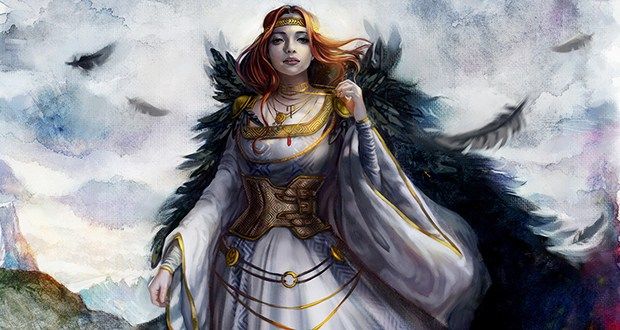
Facts about Norse Goddess Freya
Freya Norse goddess facts are all fascinating and exciting. Immerse yourself in the wonderful world of Viking mythology – get the Encyclopedia of Spirits: The Ultimate Guide to the Magic of Saints, Angels, Fairies, Demons and Ghosts by Judika Illes to find out some more about goddess Freya.
Freya Norse goddess is no doubt quite an interesting and unusual character in Scandinavian mythology. Yet, many details from her being are covered with mystery and secret. The cult of this patroness was widespread in Scandinavia during the Viking Age. The epoch of the Old Norse Religion ended right after the start of Christianization among the territory of the Scandinavian peninsula. But, belief in a goddess, Freya remains alive to this day.
Ten articles before and after
Norse Goddesses: Names & Meaning
How To Start A Chocolate Subscription Box
What Are The Benefits Of Online Printing?

